The 156th Professor of ITS Innovates Magnetic MOF Composite for Environmental Preservation
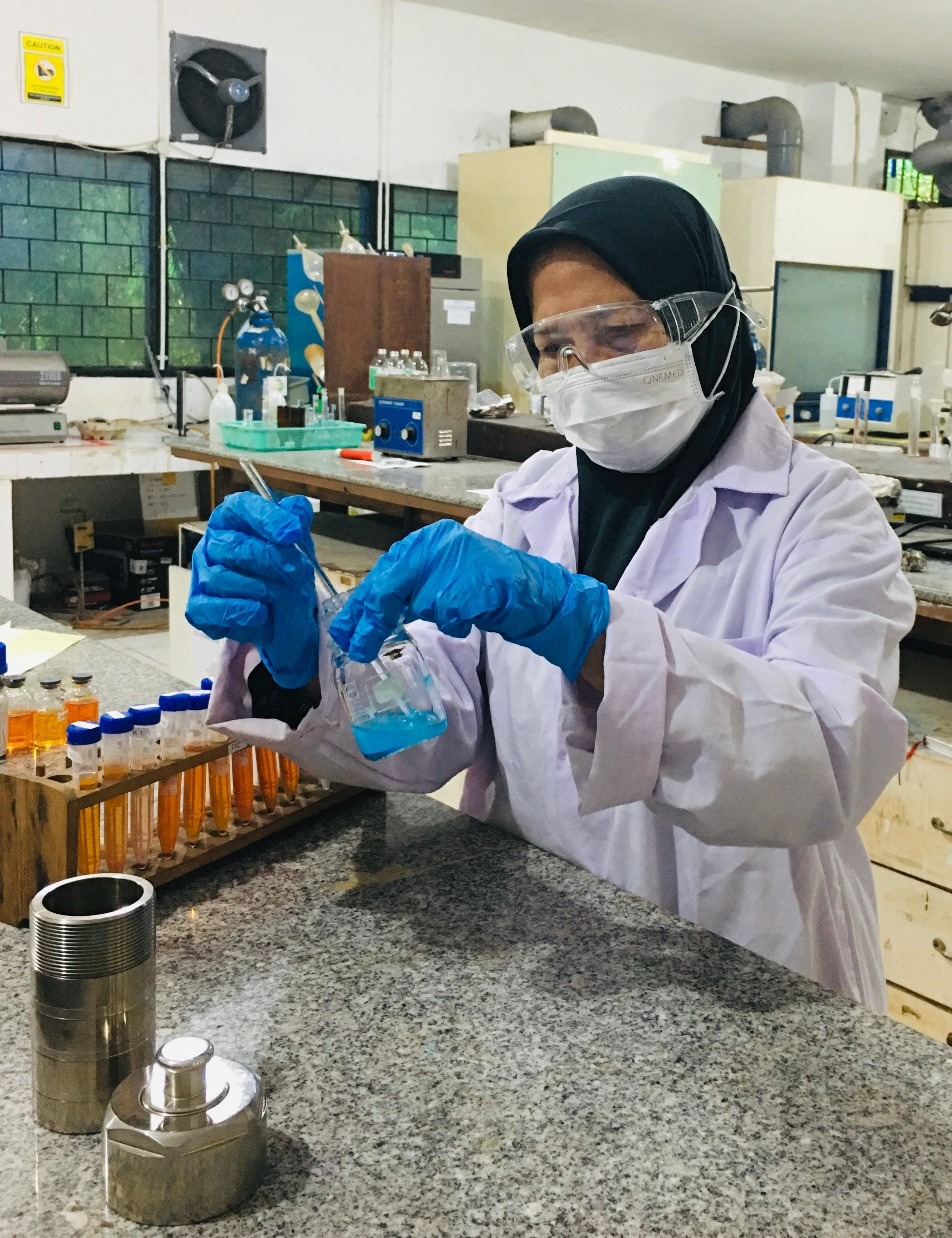
Prof. Dra Ratna Ediati MS PhD conducting research on MOF testing at the KME Laboratory of the ITS Chemistry Department
ITS Campus, ITS News – Various industrial activities generate waste that leads to significant water pollution, such as dye waste. The utilization of Metal-Organic Frameworks (MOF) offers a solution for removing pollutants from water through adsorption. To address this, Prof. Dra Ratna Ediati MS PhD, a professor from Institut Teknologi Sepuluh Nopember (ITS), has developed an environmentally friendly magnetic MOF composite as an adsorbent material for organic pollutants like dyes.
In her inaugural scientific oration titled “The Role of Porous Materials Metal-Organic Frameworks (MOF) in Supporting Environmental Conservation,” Ratna explained that MOF is a porous material with highly regular pores. “Materials with irregular pores are less effective as adsorbents,” explained the lecturer from the ITS Chemistry Department.
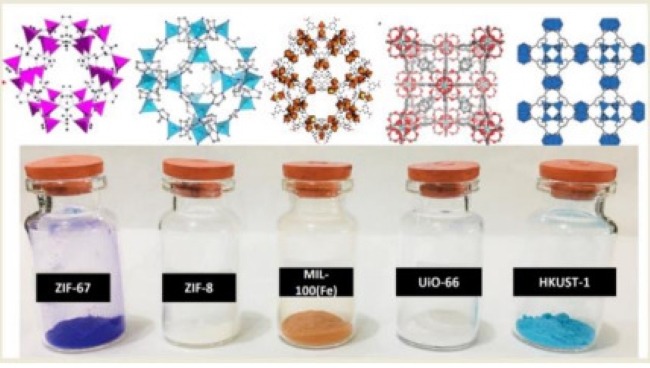
Prof. Dra Ratna Ediati MS PhD has successfully synthesized several MOFs at the KME Laboratory of the ITS Chemistry Department
Ratna further elaborated that MOF possesses extremely small pore sizes but with calculated surface areas. This surface area encompasses not only the outer area of the material but also the inner surface area of all the pores. The specific surface area of MOF is remarkably large, reaching thousands of square meters per gram.
To illustrate, one gram of MOF can have a surface area equivalent to that of a basketball court or even larger than a soccer field. “This is what makes MOF truly remarkable,” said the researcher from Probolinggo.
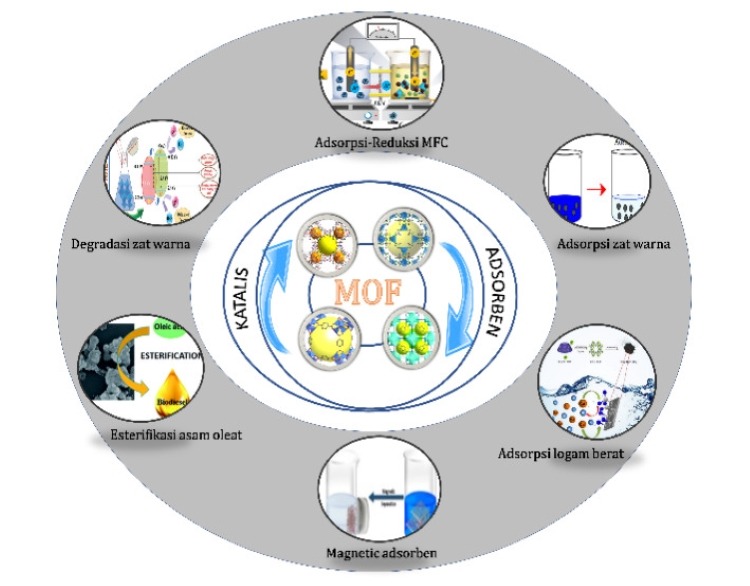
The successful development of MOF applications as adsorbents and heterogeneous catalysts
Moreover, MOF exhibits ease of synthesis, high adsorption capacity, and regenerability, which are additional advantages. The professor, who received the Satyalancana Karya Satya XXX award in 2017, also developed methods for synthesizing and modifying MOF structures by optimizing reaction conditions during the synthesis process, incorporating modulators, and doping metal ions. “Development has been ongoing from 2014 to 2023 at the Material and Energy Chemistry Laboratory (KME) of the ITS Chemistry Department,” said the mother of four.
The latest development in 2023 involves the Fe3O4@SiO2@HKUST-1 mesoporous MOF composite and its application in dye adsorption in water. The composite was synthesized using the green synthesis method, incorporating a magnetic core (Fe3O4@SiO2) into HKUST-1. “Green synthesis focuses on using environmentally friendly chemicals,” explained the alumna of the University of Manchester Institute of Science and Technology (UMIST) doctoral program.
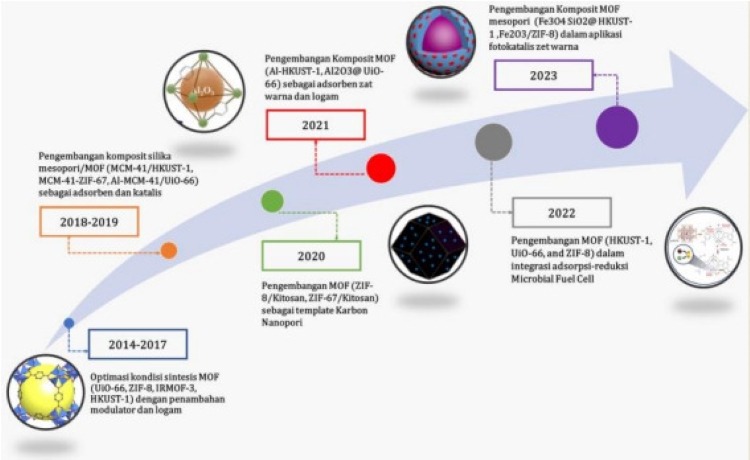
MOF development roadmap by Prof. Dra Ratna Ediati MS PhD which has been going on from 2014 to 2023
The composite’s test results as an adsorbent for Methylene Blue (MB) dye showed that the greater the addition of Fe3O4@SiO2 in HKUST-1, the higher the adsorption capacity compared to pure HKUST-1. Furthermore, the addition of this magnetic material to MOF enhances the stability of the adsorbent when used in aqueous media. “This is demonstrated by the composite’s high adsorption capacity, which remains at 71.95 percent after five uses,” stated the 156th professor of ITS.
Ratna continued to explain that this modification of MOF is not only intended for dye adsorption but also for the removal of Cr(VI), a heavy metal contaminant in water. In her research, Ratna investigated an integrated adsorption and reduction system by combining Microbial Fuel Cells (MFC) and MOF adsorbents (specifically HKUST-1, UiO-66, and ZIF-8) for removing Cr(VI) from water.
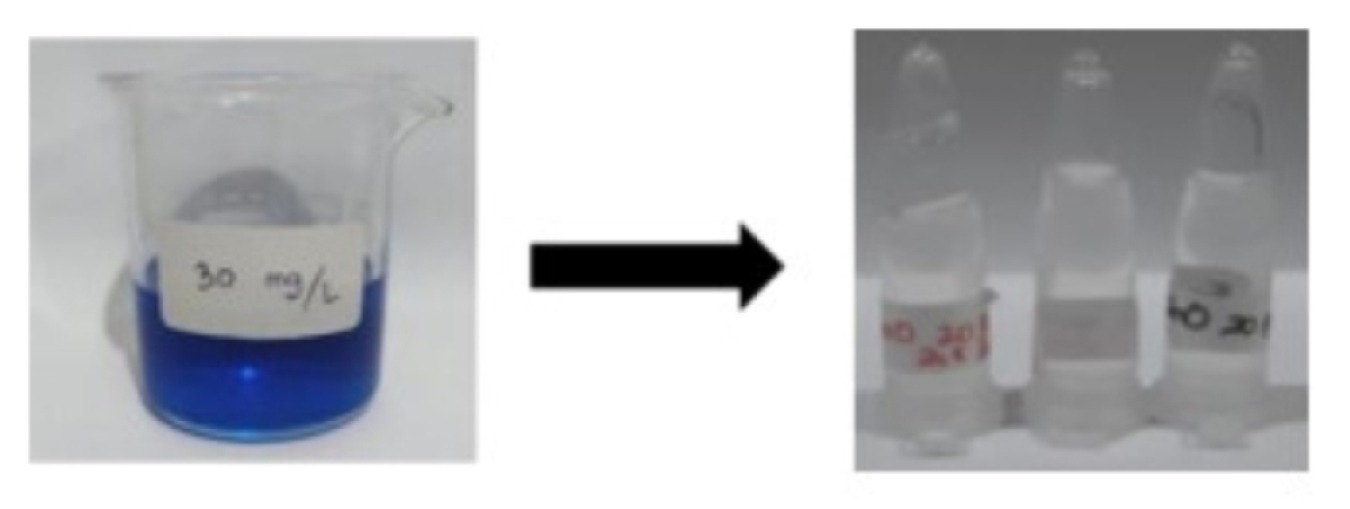 The color of MB changes to colorless with a degradation percentage of 99.77 percent after a 150-minute photocatalytic process using the Fe2O3/ZnO metal oxide
The color of MB changes to colorless with a degradation percentage of 99.77 percent after a 150-minute photocatalytic process using the Fe2O3/ZnO metal oxide
Another recent innovation involves fabricating porous Fe2O3/ZnO semiconductor materials using MOF templates as photocatalysts. Utilizing energy from sunlight, this photocatalyst becomes an active agent for breaking down dye molecules into harmless compounds like CO2 and H2O. “The resulting porous semiconductor has proven highly effective in degrading MB dyes, achieving an efficiency close to 100 percent,” highlighted the Head of the ITS Fundamental Science Research Center.
The professor, who was ranked third as Chair of the Achievement Study Program at ITS in 2016, successfully synthesized dozens of MOFs and their composites using various methods. These have been tested and proven effective as adsorbents for pollutant dyes and chromium metals. This magnetic MOF composite innovation holds the potential to be an adsorbent material for organic pollutants, such as dyes, up to nearly 94 percent. “Hopefully, the MOF researched can be produced on a large scale at an economical and competitive price,” concluded Ratna with optimism. (ITS Public Relations)
Reporter: Frecia Elrivia Mardianto
Related News
-
ITS Strengthens Sustainable Clean Energy Collaboration with Singapore
ITS Campus, ITS News — To further solidify strategic cooperation among global higher education institutions, a delegation from the
May 19, 2023 15:05 -
Supporting a Healthy Environment, ITS Inaugurates Centralized Hazardous Waste Management Facility
ITS Campus, ITS News — As a form of support for healthy environmental management, Institut Teknologi Sepuluh Nopember (ITS)
May 19, 2023 15:05 -
ITS Reaffirms Commitment to Gender Mainstreaming through Leadership School
ITS Campus, ITS News — To support inclusive and sustainable development by prioritizing justice and inclusiveness, Institut Teknologi Sepuluh
May 19, 2023 15:05 -
Providing Training, ITS Supports Hygienic and Safe Culinary Zones in Surabaya
ITS Campus, ITS News — Institut Teknologi Sepuluh Nopember (ITS) is fully supporting the strategic steps taken by the
May 19, 2023 15:05
